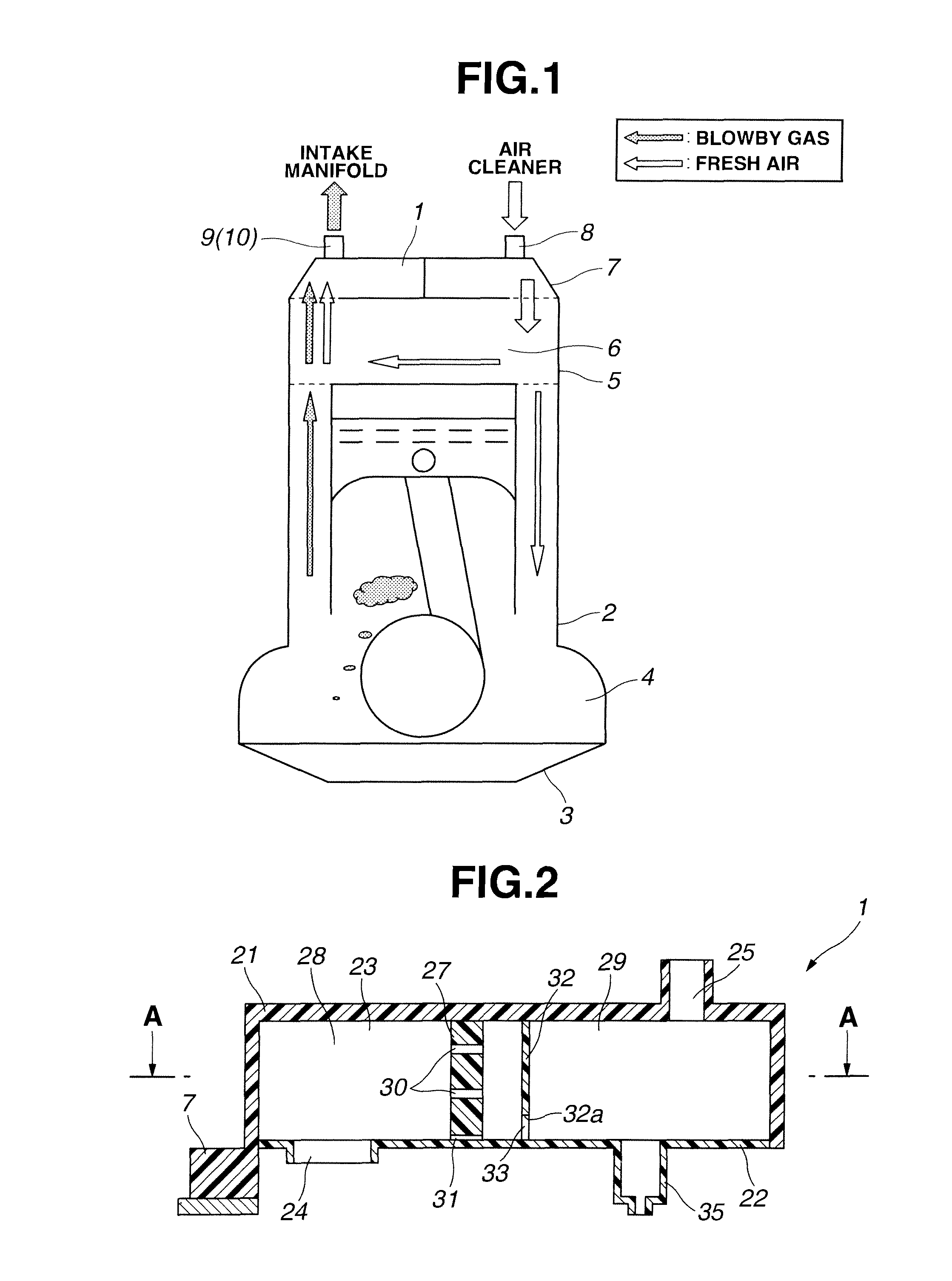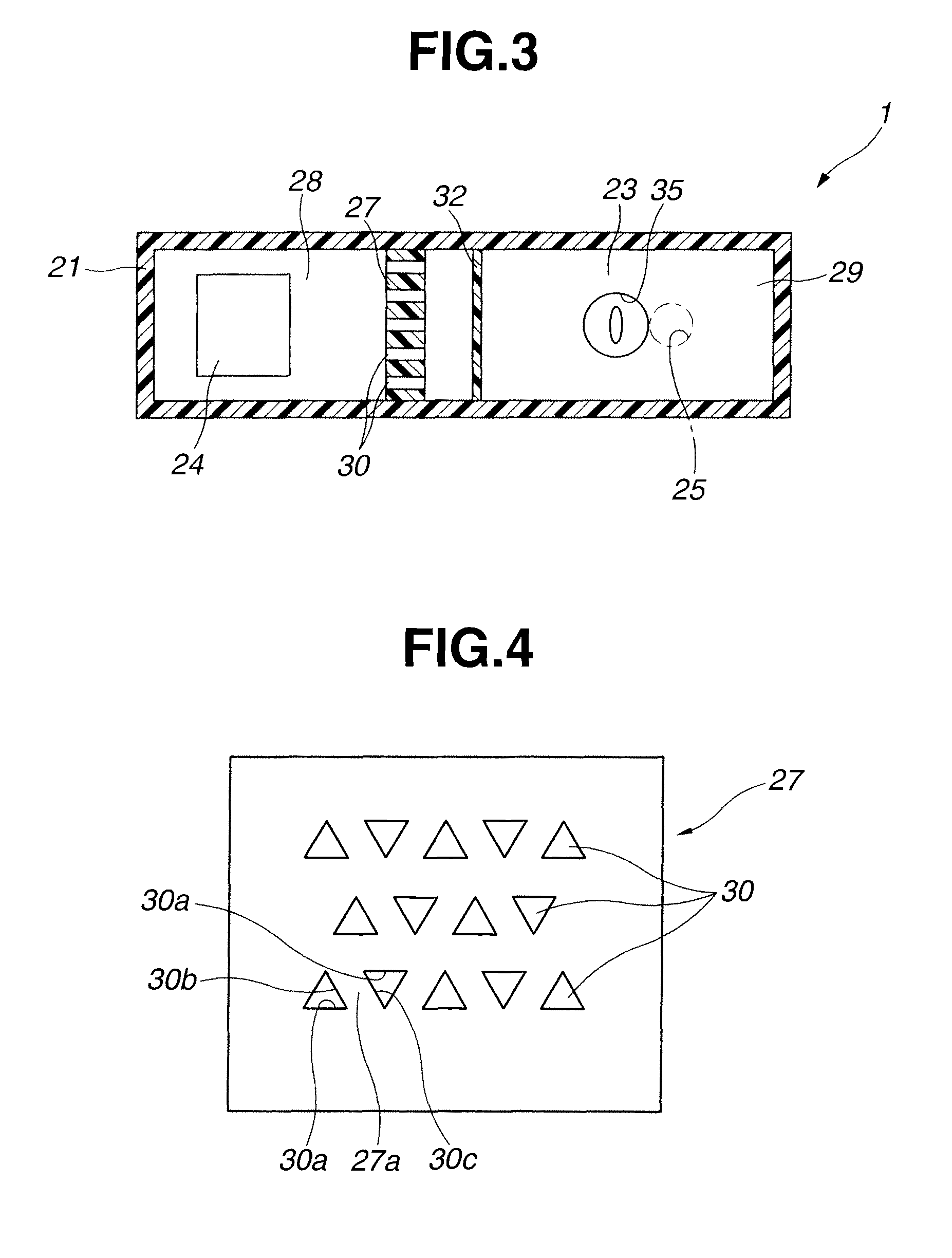Oil separator for internal combustion engine
a technology for oil separators and internal combustion engines, which is applied in the direction of combustion engines, lubrication of crankcase compression engines, pressure lubrication, etc., can solve the problems of difficult to make the trapping performance of oil mist compatible with the pressure loss at sufficient levels, and the pressure loss between the upstream side and downstream sides of the partition wall unavoidably rises according to the decrease in the cross-sectional area of passage holes, so as to improve the trapping performance and efficiency
- Summary
- Abstract
- Description
- Claims
- Application Information
AI Technical Summary
Benefits of technology
Problems solved by technology
Method used
Image
Examples
Embodiment Construction
[0031]Referring now to FIG. 1 of the drawings, an embodiment of an oil separator according to the present invention is illustrated by the reference numeral 1. The oil separator 1 is incorporated in an internal combustion engine including a cylinder block 2 and an oil pan 3 which define a crankcase 4. A cylinder head 5 is secured on the cylinder block 2 to form a valve operating chamber 6 thereinside. The valve operating chamber 6 is in communication with the crankcase 4. A cylinder head cover 7 is secured on the cylinder head 5 to form part of a blowby gas treatment system. The cylinder head cover 7 has a fresh air inflow (introduction) opening 8 connected to a part (for example, an air cleaner) of an intake system of the engine which part is located at the upstream side of a throttle valve, though not shown. Additionally, the cylinder head cover 7 has a blowby gas outflow (take-out) opening 9. A known PCV (Positive Crankcase Ventilation) valve 10 is disposed in the blowby gas outfl...
PUM
 Login to View More
Login to View More Abstract
Description
Claims
Application Information
 Login to View More
Login to View More - R&D
- Intellectual Property
- Life Sciences
- Materials
- Tech Scout
- Unparalleled Data Quality
- Higher Quality Content
- 60% Fewer Hallucinations
Browse by: Latest US Patents, China's latest patents, Technical Efficacy Thesaurus, Application Domain, Technology Topic, Popular Technical Reports.
© 2025 PatSnap. All rights reserved.Legal|Privacy policy|Modern Slavery Act Transparency Statement|Sitemap|About US| Contact US: help@patsnap.com



